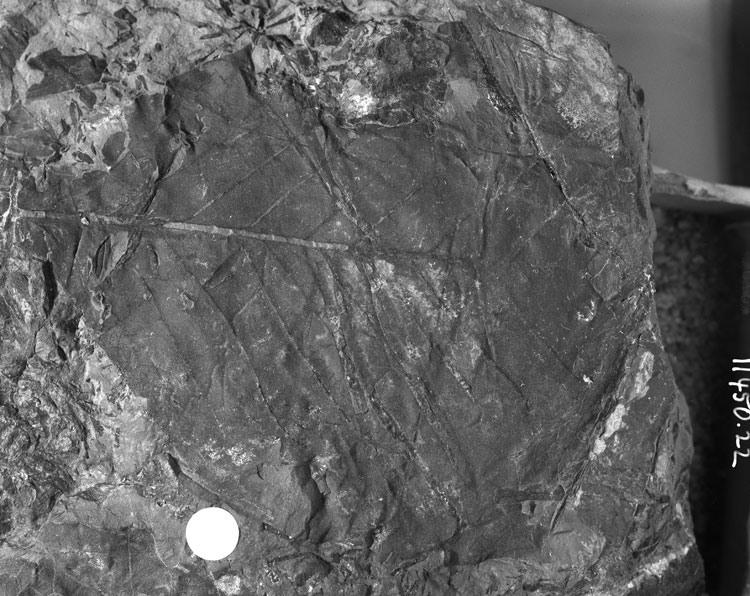Locality
Arctic Slope of Alaska locality USGS 11606, north of Maybe Creek. This locality is a bluff approximately 10 m high on the east side of an unnamed tributary of the Price River. The predominant lithologies are bentonitic clays overlying a silty sandstone capped by coal beds up to 2 m thick, which are in turn overlain by a white-gray medium-grained sandstone. Irregularly dispersed throughout the clay are nodules and sheets of ferruginous limestone (sideritic) which, although light gray when fresh, weather to a rusty brown. With the exception of some poorly preserved plant matter in the upper sandstones, and impressions of platanoid leaves in the power sandtsones, the plant material is confined to these fine-grained iron-rich nodules and is preserved as impressions totally lacking cuticle. There is little evidence of post-mortem decay but many leaves are penetrated by vertical fossil rootlets. Platanoid leaves are most common in siltier/sandier facies. The uppermost coal surface supports several in situ tree bases each of which is approximately 20 cm in diameter.
Latitude: 69.528329 °N
Longitude: -153.887128 °W
Description
Leaf: simple; symmetrical (?) wide obovate, bilobed; apex emarginate, apices of lobes missing; base decurrent; margin entire; venation pinnate camptodromous, primary midrib moderate, straight; secondary veins more or less straight arising from the midrib at an angle of approximately 50° and branching near the margin and forming loops that join the superadjacent secondary at various angles from acute to obtuse; intersecondary veins present; tertiary veins very indistinct but may be percurrent, straight, simple and often arising at right angles to the secondary veins.
Remarks
The bilobed morphology of this form would traditionally place it under the general name 'Liriophyllum' Lesquereux. This does not necessarily imply any relationship with the extant genus Liriodendron Linnaeus although specimens ascribed to Liriophyllum from the Dakota Group are reported to have the same type of subsidiary cell organization (anomocytic) around the stomata (Dilcher and others, 1978). A very similar form is MA92 (USGS 11606.63). An important feature of Liriophyllum that is not displayed in MA88 or MA92 is a strong apical dichotomy of the primary vein.
